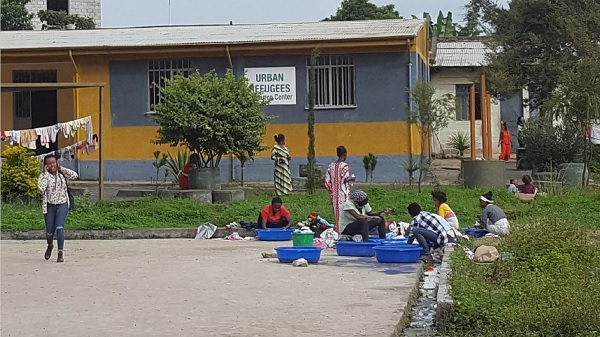
WASHINGTON, DC (World Bank Group) – The World Bank’s Board of Executive Directors approved the second phase of the Development Response to Displacement Impacts Project in the Horn of Africa (DRDIP II) for $180 million in International Development Association* (IDA) financing to help Ethiopia improve access to basic social and economic services, expand livelihood opportunities, and enhance environmental management for refugees and their host communities.
Approximately 2.5 million people in Ethiopia, of whom one-third are refugees and at least 50% are women, will benefit from the new financing to DRDIP. This ongoing project has already assisted over 5 million people in Djibouti, Ethiopia, Kenya, and Uganda since 2016.
DRDIP II will expand the geographic scope of the project to cover all communities in Ethiopia affected by refugees’ presence and to deepen support for the implementation of the government’s refugee inclusion policies. Refugees are included as direct beneficiaries of this new phase, and their concerns will be better integrated into local development planning with a special focus on women’s economic and social empowerment. The government has also agreed to third-party implementation and monitoring in areas at high risk of ongoing conflict to ensure that needs in all refugee-hosting areas in the country are met.
“DRDIP II activities will complement humanitarian support for refugees and host communities,” said Boutheina Guermazi, World Bank Director of Regional Integration for Africa, the Middle East and North Africa. “This will help the ongoing transformation of the government’s refugee response approach from a short-term humanitarian model into a more sustainable and long-term development approach.”
Ethiopia has long been a generous host to refugees and its policy response to forced displacement has been progressive. It is the third largest refugee hosting country in Africa and the ninth largest worldwide. Most refugees in Ethiopia originate from South Sudan, Somalia, and Eritrea, and face protracted displacement due to regional instability. They reside in camps, which are generally located on the periphery of the country.
DRDIP II’s activities respond to the impacts of the refugee presence by upgrading and constructing public infrastructure such as schools, health centers, water systems, roads, and markets for better services and to address the strain that refugee inflows can place on service provision. Activities to mitigate environmental degradation are also included. To leverage the opportunities presented by refugee inflows, livelihood activities support income-generation for host communities and refugees to become self-reliant and reduce dependence on humanitarian aid.
*The World Bank’s International Development Association (IDA), established in 1960, helps the world’s poorest countries by providing grants and low to zero-interest loans for projects and programs that boost economic growth, reduce poverty, and improve poor people’s lives. IDA is one of the largest sources of assistance for the world’s 74 poorest countries, 39 of which are in Africa. Resources from IDA bring positive change to the 1.3 billion people who live in IDA countries. Since 1960, IDA has provided $458 billion to 114 countries. Annual commitments have averaged about $29 billion over the last three years (FY19-FY21), with about 70 percent going to Africa. Learn more online: IDA.worldbank.org
Source: World Bank Group
